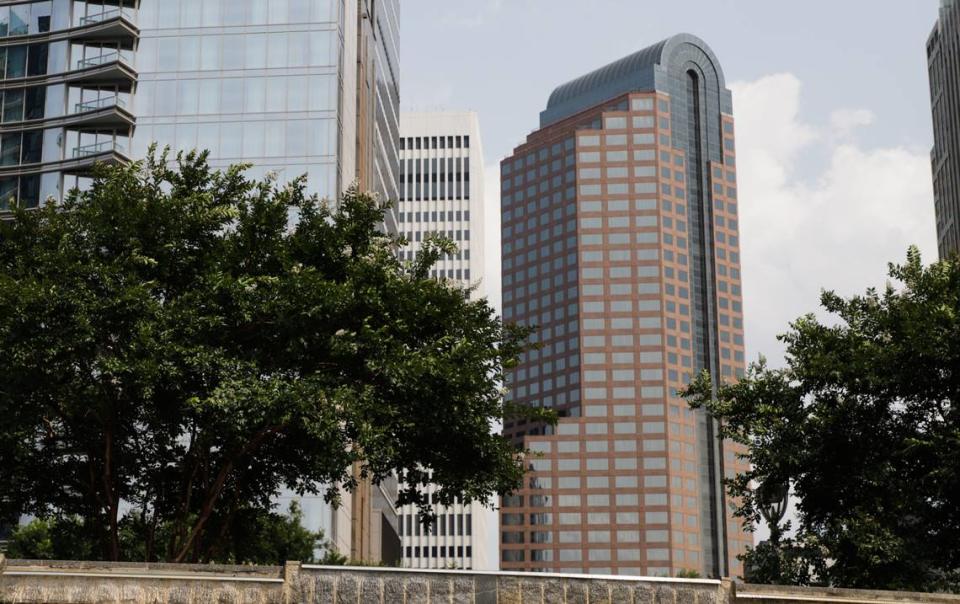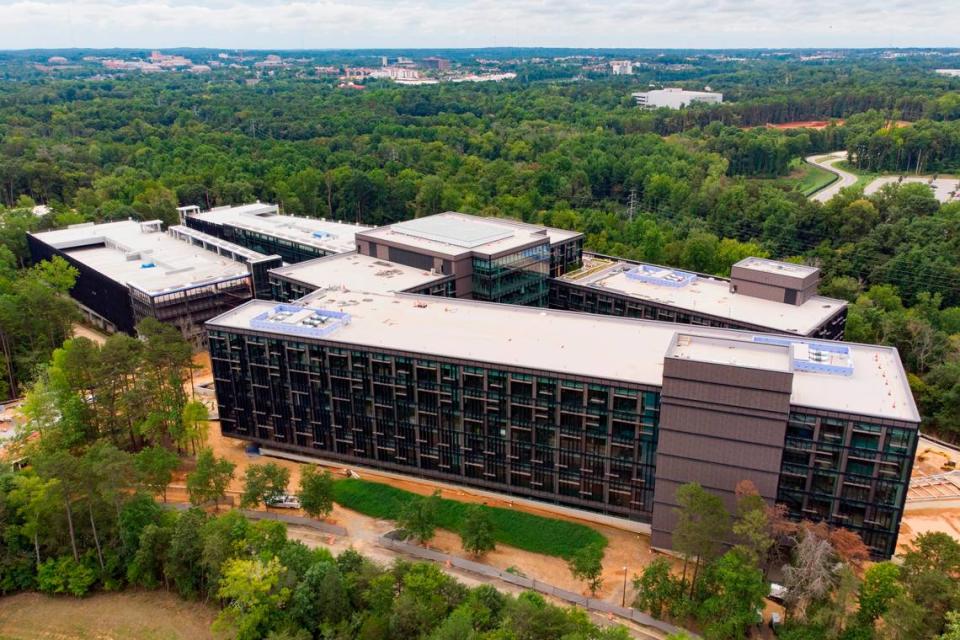Uptown is still confronting high office vacancies. But so are other areas of Charlotte.
Offices in Charlotte’s uptown are still not filled with employees like they were before the pandemic, but vacant cubicles are becoming more common in nearly every corner of Charlotte.
The lingering effects of the COVID pandemic, employees working from home and companies taking up less space all contribute to widening office space vacancies, according to data from CoStar Group, a provider of information for property markets.
Out of an inventory of 136.4 million square feet of office space in the metro area, close to 14% is vacant as of January. This means 19 million square feet is available to rent or buy, said Chuck McShane, director of market analytics at CoStar.
The office vacancy rate for the Charlotte region had increased from 6.8% during the first quarter of 2020 to 12.3% around the same time last year.
Out of the top submarkets in the region with at least 3 million square feet of office space, the lowest vacancy rates were in South Charlotte (6.9%), Midtown/Randolph (8.4%) and Matthews (8.9%). The majority of the office inventory in those submarkets is comprised of smaller offices, McShane said. Medical offices, for instance, were more stable during the pandemic.
There weren’t a lot of new offices built there compared to larger submarkets in the Charlotte region with more construction activity — and the highest office vacancy rates.
That included the University area (26.3%), South/485-Ballantyne (25.2%) and Plaza Midwood/NoDa areas (20.2%). The vacancy rates for the airport and uptown followed at 18.7% and 18.5%, respectively.
“There’s a lot of speculative space that’s being built,” McShane said of the Plaza Midwood/NoDa area. “Developers are betting on being able to find tenants for it.”
Newer office buildings are attracting more leases while ones built before 1990 are seeing less. Uptown buildings constructed before 1990 have a vacancy rate around 30%, according to McShane.
“Companies are moving to newer spaces and they tend to be taking less space when they get to the newer buildings,” he said.
And fewer businesses are filling those voids, he said.
Vacancy rates increased last year around Charlotte because of the long-term impacts of the pandemic and how it shifted remote work and hybrid work trends, which includes a mix of working from home and going to the office, McShane said.
“You’re starting to see some companies require people to come in more days a week, but I think you’re going to see more companies really scrutinize how they use their space,” he said. “Smaller footprints are going to be here to stay I believe.”
Big employers like Bank of America, Duke Energy, and Wells Fargo are consolidating space, McShane said. “You’re seeing a shift in smaller footprints. At the same time you’re not seeing as many companies that are using offices move out of the region.”

A new way to work
The University area is home to the region’s highest office vacancy rate.
Inventory is a little older there, and a lot of it was based around call center and back-office operations, McShane said. Those types of businesses were heading towards remote work, even before the pandemic.
In August 2022, the St. Louis-based health insurance company stunned the region and canceled its $1 billion plan to bring 3,200 jobs to the University area for its East Coast headquarters. That dealt a substantial blow to the area’s office vacancy rate.
Real estate firm Cushman & Wakefield is still trying to find a buyer or tenants for the 800,000-square-foot office building at University City Research Park.

Companies are also moving to areas that aren’t just office space, but have other features, such as retail and living space around it, McShane said. One example is the South End area and its vacancy rate of 10% — one of the lowest in the region.
“If you think about how South End developed, apartments came first, then retail,” he said. “They’re people living there, shopping there 18 to 24 hours a day. And that’s where office space wants to locate now versus uptown, which was really built on the model of people commuting in from the suburbs and commuting out at five o’clock in the afternoon.
“Those central business districts are going to struggle the more office-centric they are,” McShane said. “Neighborhoods that have a mix of uses, like South End, are doing better.”
‘No one is funding new offices right now’
There hasn’t been a lot of groundbreaking for new offices in recent years because of financial institutions not approving loans for office construction, McShane said.
“No one is funding new offices right now,” he said. “Banks aren’t underwriting loans to build new offices because there’s so much uncertainty about how we’re going to use offices in the future.”
With less construction, older offices will eventually get filled. But it’s going to take time with results coming five to 10 years from now.
The situation is similar to the “retail apocalypse” more than 10 years ago, when stores began closing buildings around the country, McShane said. Banks were hesitant to give loans or finance construction of new retail development without tenants in place because of risks.
“Over time, we haven’t built much new retail and most of the older retail, aside from malls, has gotten backfilled,” he said. “So, you now have record low vacancy rates in retail.”

